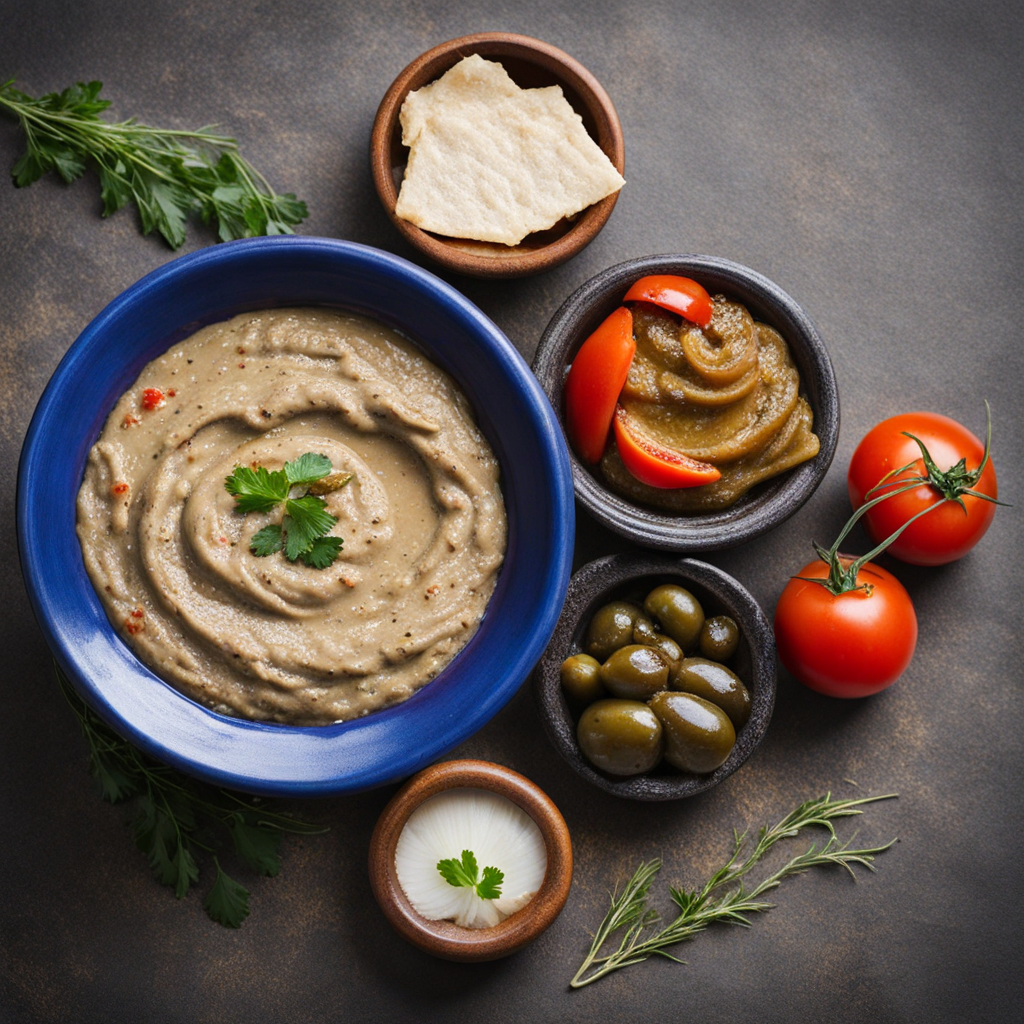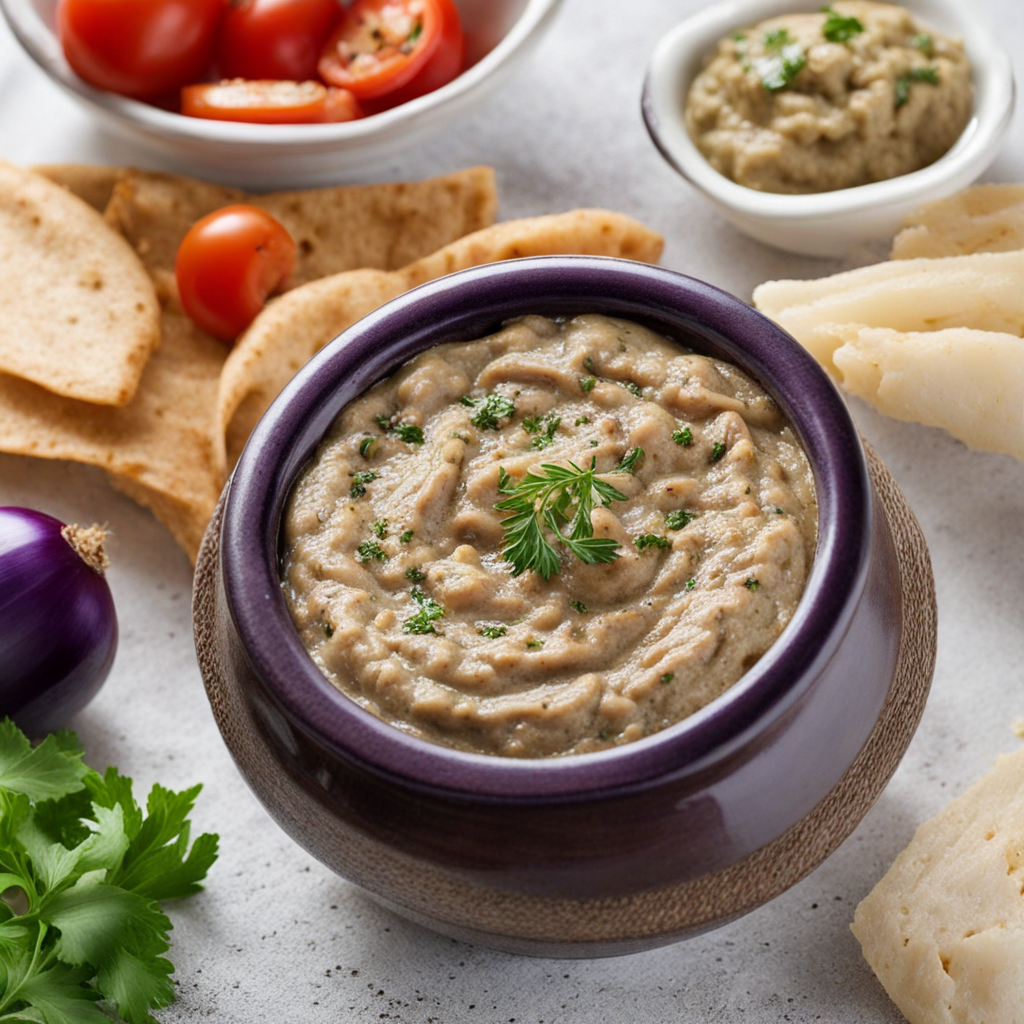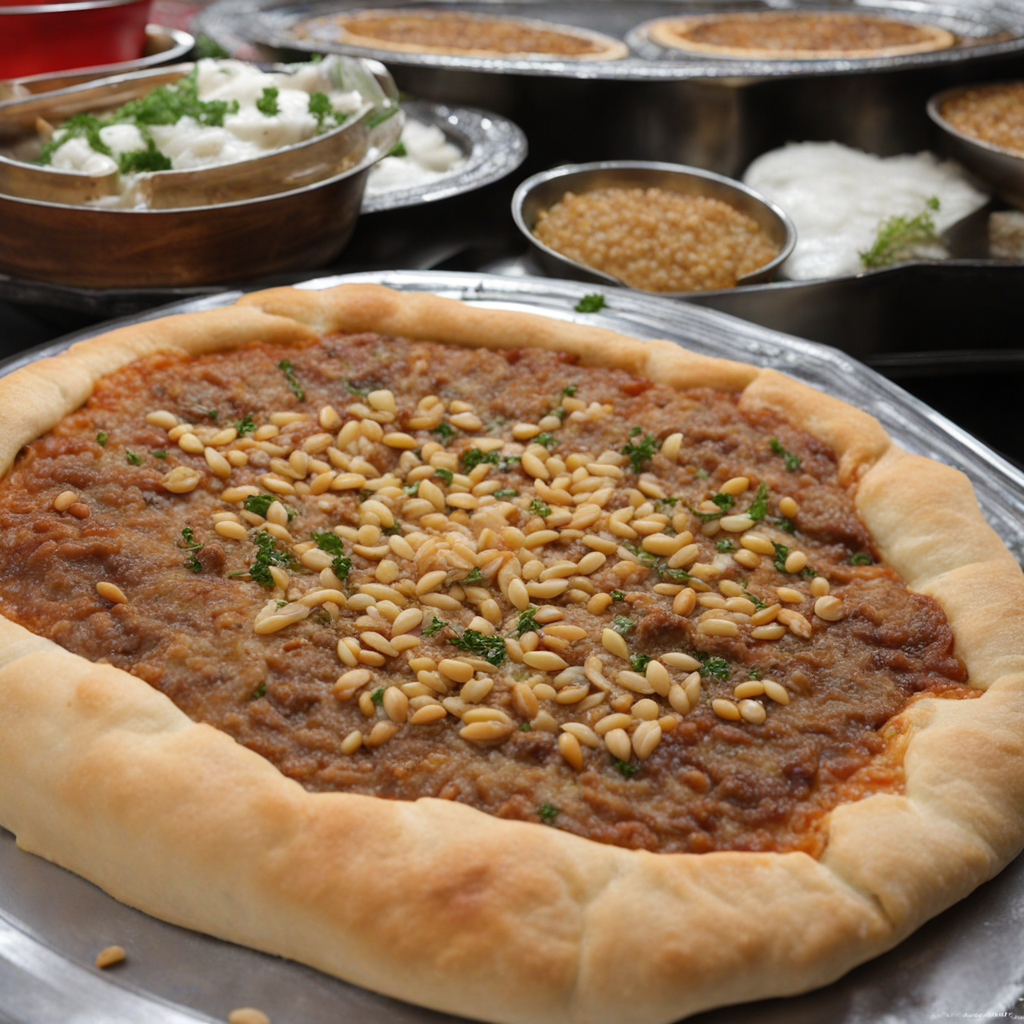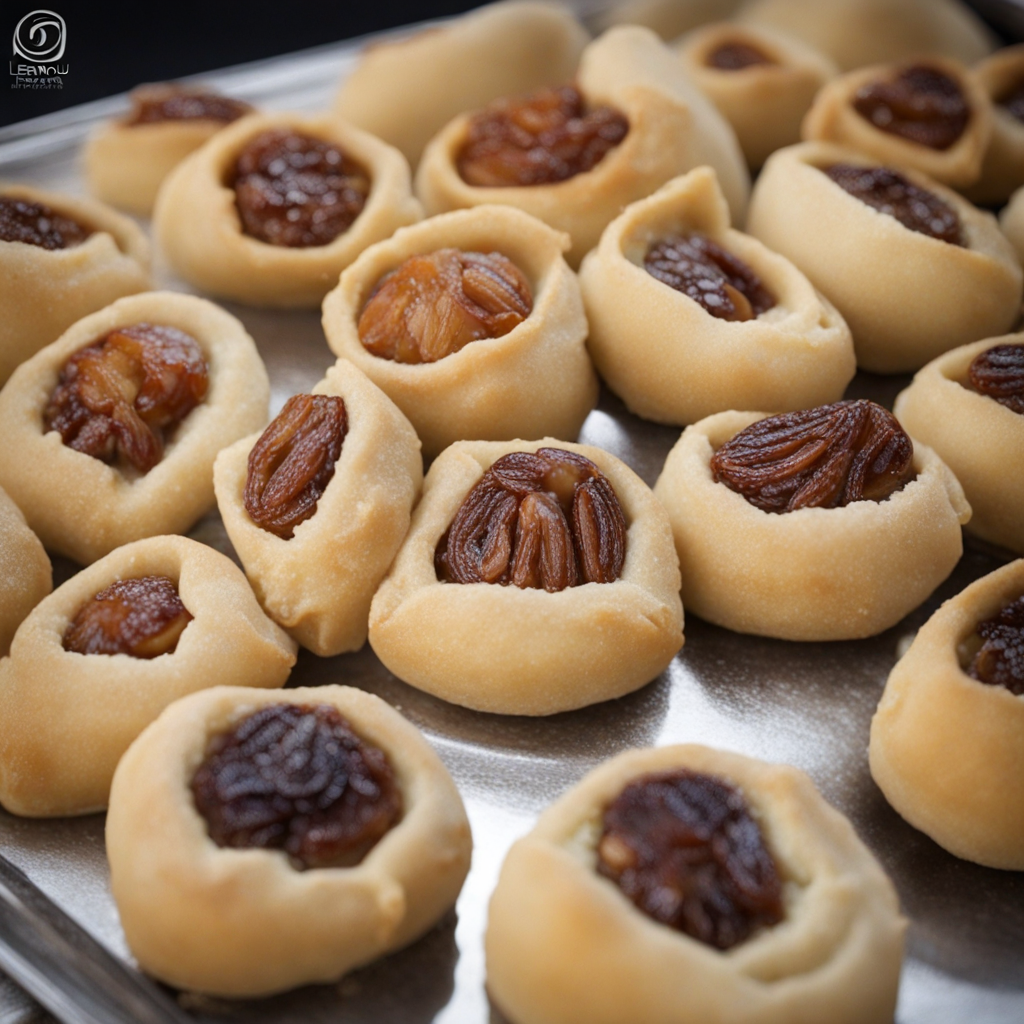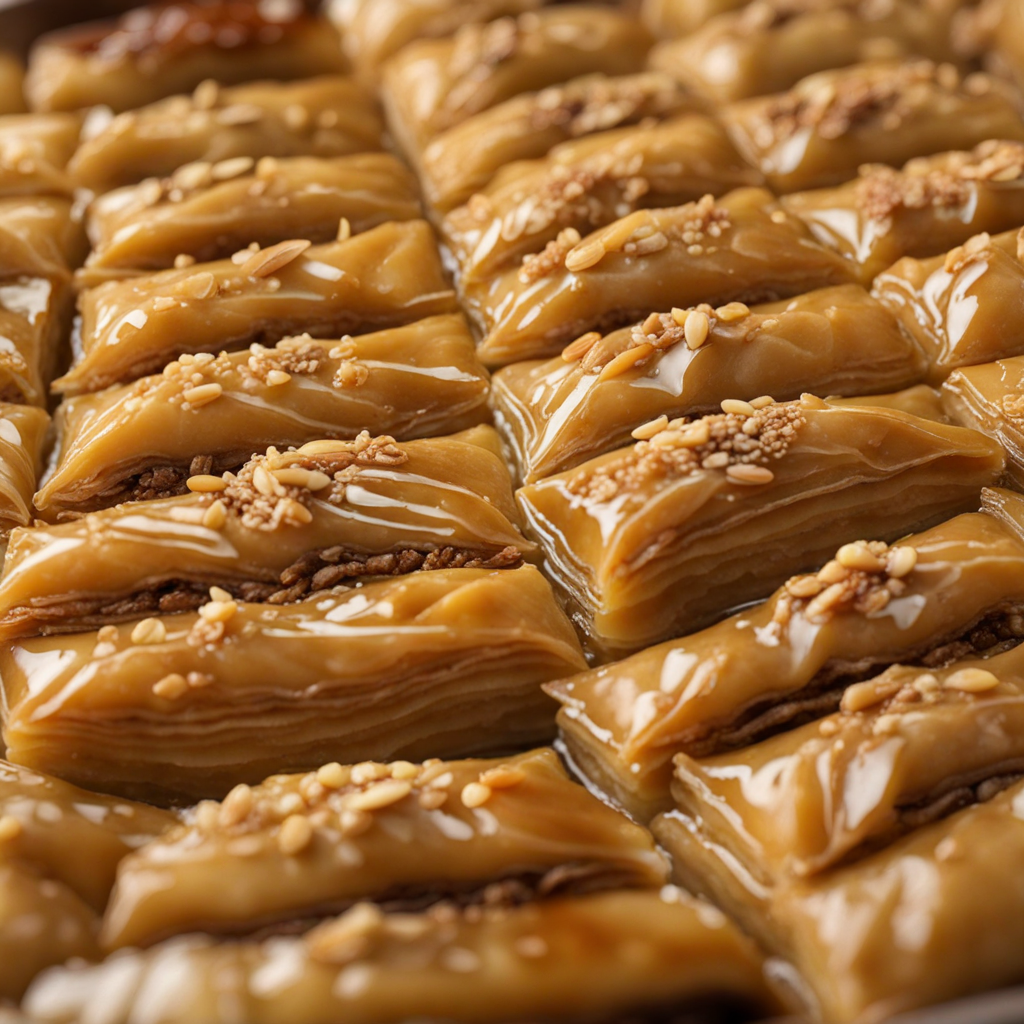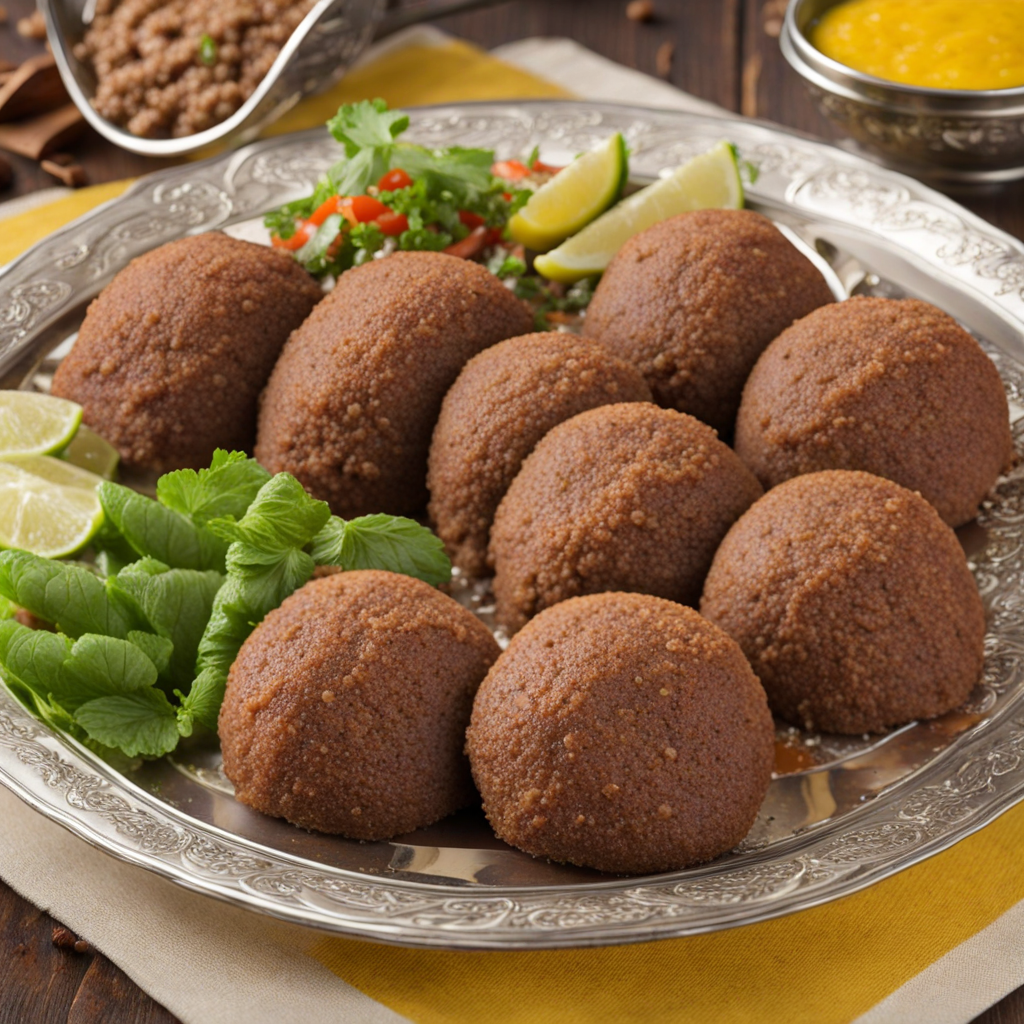Baba Ghanoush
Baba Ghanoush is a velvety, smoky dip that hails from Lebanon, offering a delightful blend of flavors that is sure to intrigue any palate. This dish is primarily made from roasted eggplant, which is charred to perfection, allowing its natural sweetness to emerge while infusing the dish with a rich, smoky essence. The eggplant is then combined with tahini, a creamy sesame paste that adds a nutty depth, along with fresh garlic, lemon juice, and a sprinkle of salt. The result is a smooth and luscious texture that beckons for dipping or spreading on warm pita bread. The flavor profile of Baba Ghanoush is both complex and harmonious. The charred notes of the eggplant are beautifully balanced by the tangy brightness of the lemon juice, while the tahini introduces a creamy richness that envelops the palate. Garlic contributes a subtle kick, enhancing the overall experience without overpowering the other ingredients. Often garnished with a drizzle of olive oil, a sprinkle of paprika, or fresh herbs, each bite offers a delightful burst of flavor that transports you straight to the Mediterranean coast. This dish is not only delicious but also versatile, making it perfect as an appetizer, a side dish, or a part of a larger mezze platter. Served alongside an array of fresh vegetables, olives, or stuffed grape leaves, Baba Ghanoush invites social sharing and discovery. Whether enjoyed at a bustling Lebanese restaurant or made at home, this exquisite dip is a celebration of simple ingredients that come together to create a truly unforgettable taste experience.
How It Became This Dish
Origins of Baba Ghanoush Baba Ghanoush, a beloved dish from Lebanon, has its roots steeped in the ancient culinary traditions of the Middle East. Although the exact origins of Baba Ghanoush are somewhat murky, it is widely believed that the dish traces back to the Levant region, encompassing modern-day Lebanon, Syria, Jordan, and Palestine. The name "Baba Ghanoush" is derived from Arabic, where "Baba" translates to "father" and "Ghanoush" is often interpreted as "pampered" or "indulged." This suggests that the dish was perhaps given a playful title, reflecting a sense of affection and indulgence associated with its flavors and ingredients. The primary ingredient for Baba Ghanoush is the eggplant, a staple vegetable in Mediterranean cuisine. Historical records indicate that eggplants were first cultivated in India and later made their way to the Mediterranean around the 4th century AD. The dish itself is thought to have emerged in the 13th century, coinciding with the rise of Arab trade routes that facilitated the exchange of culinary practices and ingredients across regions. With its rich, smoky flavor profile, Baba Ghanoush quickly became a popular addition to mezze platters, which are a hallmark of Levantine dining. \n\n Cultural Significance Baba Ghanoush holds a significant place in Lebanese culture and is emblematic of the country's rich culinary heritage. In Lebanon, food is not merely sustenance; it is a vital aspect of social interactions and gatherings. Baba Ghanoush is often served as an appetizer in festive occasions, family gatherings, and communal meals. The dish embodies the concept of “mezze,” a spread of small dishes that encourages sharing and conversation among diners. This social aspect of dining is deeply ingrained in Lebanese culture, where meals serve as a means of connecting with family and friends. Moreover, Baba Ghanoush is a symbol of the hospitality that Lebanese people are renowned for. When guests arrive, a spread of mezze, including Baba Ghanoush, is typically laid out, showcasing the host's culinary skills and generosity. This tradition highlights the importance of community and the role that food plays in strengthening bonds among individuals. In Lebanon, serving Baba Ghanoush is not just about the dish itself; it is about creating a warm and inviting atmosphere that fosters connection and camaraderie. \n\n Ingredients and Preparation The beauty of Baba Ghanoush lies in its simplicity, yet the preparation is an art form in itself. The primary ingredients include roasted or grilled eggplant, tahini (a sesame paste), garlic, lemon juice, and olive oil. The smoky flavor of the eggplant is achieved through roasting it over an open flame or in a hot oven, allowing the skin to char and the flesh to become creamy and tender. This roasting method not only enhances the taste but also imparts a distinctive aroma that is characteristic of authentic Baba Ghanoush. Once the eggplant is roasted and cooled, the flesh is scooped out and blended with tahini, garlic, lemon juice, and a drizzle of olive oil to create a smooth, velvety dip. The balance of flavors is crucial, as the nutty richness of tahini complements the smoky eggplant, while the tanginess of lemon juice adds brightness to the dish. Some variations of Baba Ghanoush may include additional ingredients such as pomegranate seeds, parsley, or cumin, reflecting regional preferences and personal tastes. \n\n Evolution Over Time Throughout the centuries, Baba Ghanoush has evolved and adapted to different culinary influences and preferences. As Lebanese cuisine spread beyond its borders, the dish garnered international attention, becoming a staple in Mediterranean restaurants worldwide. In the 20th century, particularly with the rise of globalization, Baba Ghanoush found its way into mainstream Western cuisine. This exposure led to variations that incorporated local ingredients and flavors, resulting in diverse interpretations of the traditional dish. In the United States, for instance, Baba Ghanoush became popular in the 1970s and 1980s as part of the broader trend of interest in health foods and vegetarian cuisine. The dish was embraced by a variety of dietary movements, particularly for its nutritious profile, as it is low in calories and rich in vitamins and healthy fats. The availability of eggplants and tahini in supermarkets made it accessible to home cooks, further contributing to its popularity. \n\n Modern-Day Baba Ghanoush Today, Baba Ghanoush continues to be a staple in Lebanese households and restaurants, but it also reflects the growing trend of fusion cuisine. Chefs around the world are experimenting with the classic recipe, introducing new flavors and textures while maintaining the essence of the dish. Variations might include adding roasted red peppers for sweetness, incorporating spices like smoked paprika for depth, or even infusing the dip with herbs such as basil or mint for a refreshing twist. Social media has played a significant role in the resurgence of Baba Ghanoush, with food bloggers and influencers sharing recipes and creative presentations that entice a new generation of food enthusiasts. The dish has also become a favorite among health-conscious individuals, as it is often featured in vegan and Mediterranean diet recipes. Its versatility allows it to be enjoyed as a dip, spread, or even as a topping for grilled meats and vegetables, showcasing its adaptability in modern cuisine. \n\n Conclusion Baba Ghanoush is more than just a delicious dip; it is a testament to Lebanon's rich culinary history and cultural significance. From its ancient origins to its contemporary variations, Baba Ghanoush has maintained its place as a cherished dish that brings people together. As it continues to evolve, it remains a flavorful symbol of hospitality and community, inviting everyone to experience the warmth and connection that Lebanese food embodies.
You may like
Discover local flavors from Lebanon


